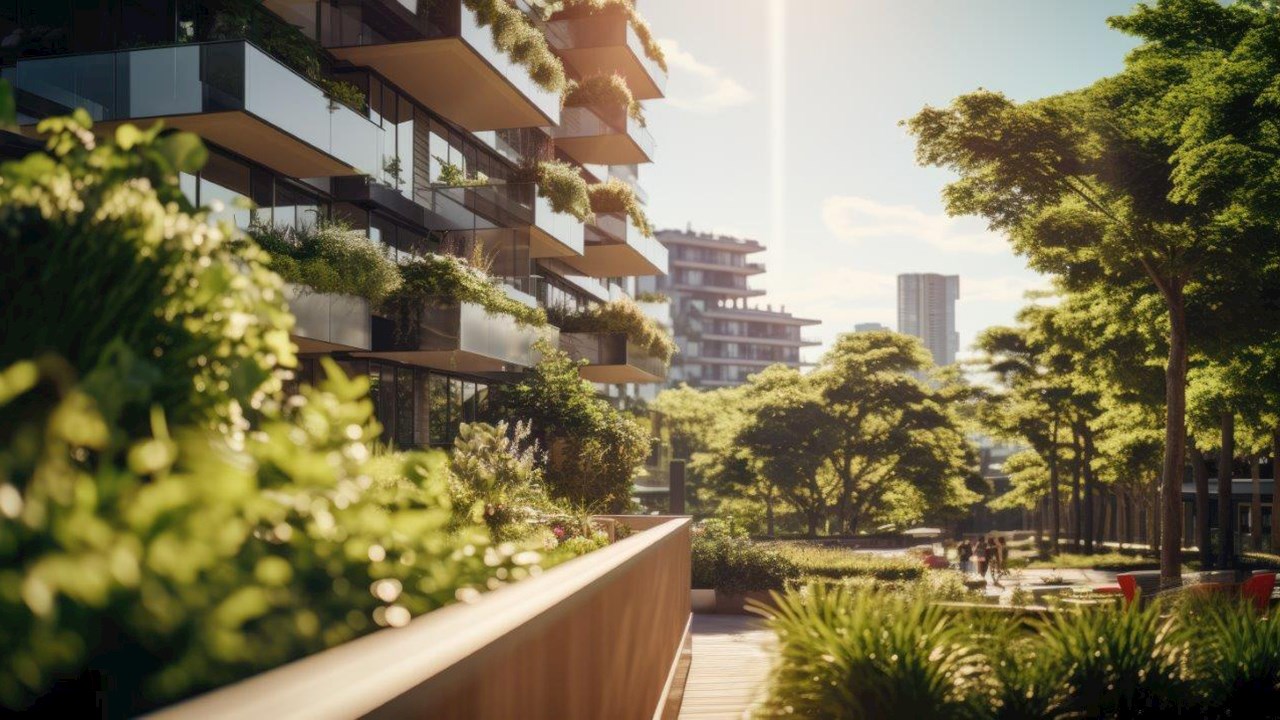Meeting carbon reduction targets is possibly the most vital, and complex, challenge of our time. Along with transitioning from traditional fossil fuels to more sustainable energy sources, there’s an urgent need for us all to use less of the planet’s resources.
At next week’s Light + Building 2024, where the best global home and building technology minds will meet, how the sector can help deliver critical sustainability goals needs to be top of the agenda.

Electrification and energy distribution for lower-carbon cities and homes
Transitioning away from fossil fuels means integrating more renewable sources into our energy supply along with increasing electrification. When it comes to powering the cities, and the buildings we live and work in, far more electric power will be a necessity, and in many cases, this will mean the existing energy distribution systems need to be updated in the direction of providing higher capacity.
Updating the electricity distribution grid is vital, and supporting this is a significant focus for ABB as well as enabling residents to manage loads and increase efficiency through the latest smart buildings technology, once this is achieved.
We know that 75 percent1 of buildings are energy inefficient and technology holds the key to turning this around. Our InSite energy management system is one example of a very scalable and customizable setup.
Consisting of modular components, like energy meters, current sensors, communication modules, and accessories that enable remote monitoring and control of energy being used in a building, energy savings of up to 40 percent can be achieved depending on the operating conditions.

Putting circularity at the heart of product development
Making our buildings smart and more sustainable, whether through retrofits or new builds, involves the mass production of vast numbers of products, and the use of many different types of materials and finite resources.
Safety will always be paramount to any electrical installation, and we endeavor to couple enhanced performance with sustainable evolution, meaning constant innovation.
So, we’ve set ourselves the challenge of finding ways of using fewer materials in product creation where possible, along with prolonging the lifespan of our products, enhancing performance, reusing and recycling materials as much as possible.
One way we’re achieving this is through ‘miniaturization’ – making products with enhanced functionality, only smaller. We know that if we can reduce the size of some of our products, that adds up to vast reductions in the materials used overall.
Doing more with less is something we’ve achieved through our compact RCBO DS301C that offers increased levels of protection in very small dimensions. By occupying less space in the electrical panel, we can offer more customer value, while having less environmental impact with the reduced materials used, benefiting everyone.
Another example of environmentally virtuous innovation is given by the new S300P miniature circuit breaker – the first MCB in our EcoSolutions™ program, which achieved this status through reducing power loss by 25 percent, enhanced recyclability rate at the end of life, and significantly improved technical performance with fewer materials. All this while still providing a top-performance protection device.
Achieving efficiency, safety, and enhanced performance
By introducing modular installation concepts we’re able to increase flexibility and compatibility to save time, space, and stock. A recent example is ABB’s new FlexLine® system, where consumer units are characterized by fast and easy-to-install protection devices, leading to halved labor time and space usage.
Compact size and modularity also facilitate retrofits, as ABB or third-party panels can be upgraded or made smart with minimal impact on the existing installation while reducing downtime and disruption.

Reaching sustainability goals through innovation and collaboration
For many businesses, demonstrating circularity will become more central to their license to operate, and as consumers, we all also need to make changes to the way we live so we consume less energy and better optimize what we use. Reimagining the way we live, and how we power our buildings is an essential step in achieving a low-carbon future, and transitioning to smart buildings is an integral part of the journey.
For ABB our aim is for at least 80 percent2 of our products to achieve the KPIs we set out in our circularity approach. We’ll work closely with customers and suppliers to embed circularity across the value chain, helping meet sustainability aims by bringing the latest technical innovations and driving greater efficiency.
It's through constant innovation, utilizing the power of technology as a critical enabler, that we have the power to accelerate the journey to net zero. True collaboration underpins the technical roadmap of the future: we can achieve so much more when we do it together.
By taking collective responsibility and continuing to focus on product design to use less, intelligent use of materials and the planet’s finite resources, as well as ensuring labor-saving installations and retrofits, we can help accelerate our transition to a low carbon future and circular economy.
2 https://global.abb/group/en/sustainability/we-preserve-resources
About the author

Aldo Sciacca - Head of Global Product Group Energy Distribution, Smart Buildings
Based in Italy, Aldo holds a Master's degree in physics from the University of Milano and has been recognized with an industry award for his technical innovation. Aldo's ABB journey began in 1998 in Research. With over two decades of experience in ABB's Electrification business, Aldo's expertise enjoyed the learnings achieved by covering various roles in product management, corporate research, and innovation. Since June 2022 he became Global Head of Energy Distribution for Smart Buildings division.
